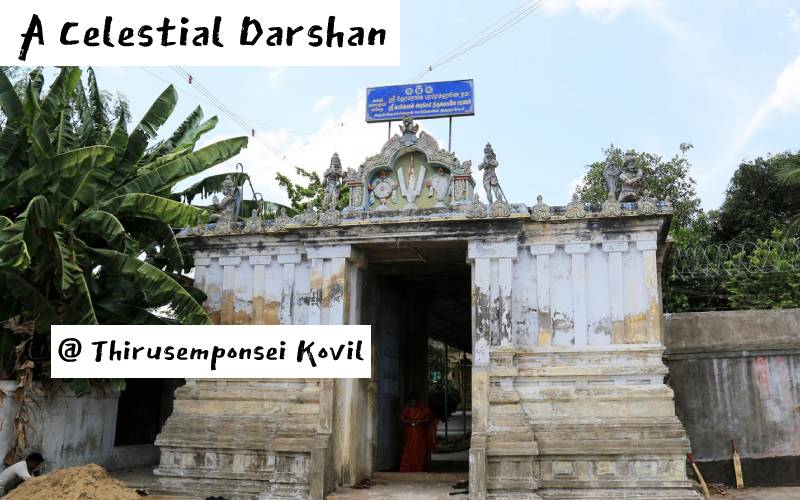
Thirunangoor is located in the kaveri delta region. It is the home to several temples of Lord Vishnu. These temples are listed as divya desam-s by Saint Ramanujaacharya. Thirumangai Aazhwaar had visited these places and sung in praise of the lords. There are several divya desam-s in the Thirunangoor cluster and they need a lot of attention. The annual Garuda Sevai festival from this part of the country is quite famous. A large number of visitors come to Thirunangoor to offer their prayers during the Garuda Sevai. The lords of the Thirunangoor divya desam-s come in a procession during this celebration.
Kaakumaani Aadi Kesavalu Chetty in Chennai was a vaishnavite and the endowments connected with him are quite interesting. The processional material required for the Garuda Sevai was contributed by the famed Kaakumaani Aadi Kesavalu Chetty Charities. This temple is connected with Ramayana. Lord Rama had eliminated the demon Ravana during the treta yuga. He was returning to Ayodhya in the pushpaka vimana and he disembarked at the ashram of Sage Bharadwaja. The Sage Dhrudanetra was neighbour of Bharadwaja and Rama paid a visit to his hermitage too.
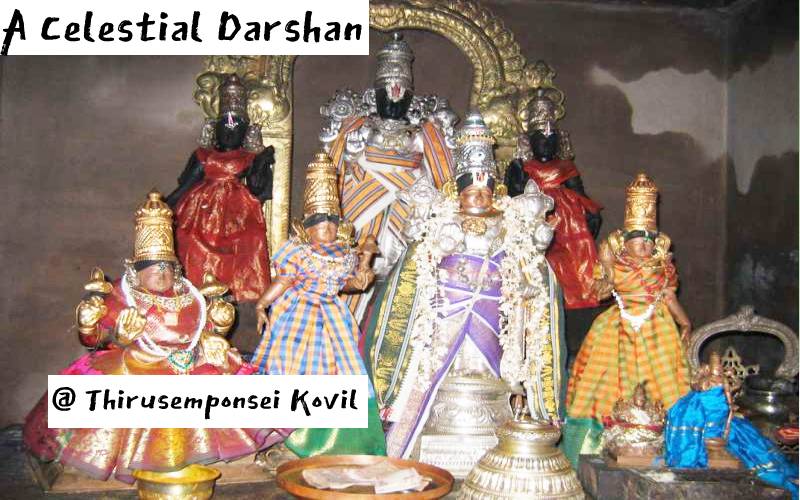
Sage Dhrudanetra advised Rama as follows, “Hey Rama, you did the right thing by killing the demon. However, Ravana happens to be the son of Sage Pulastya. Kindly produce a cow made of gold and donate it to a vipra to ensure that brahmahatthi does not afflict you.” Lord Rama adhered to the advice of Dhrudanetra and he gave the cow made of gold to a learned Brahmin. The scholar used the gold cow to build a temple for Lord Vishnu and therefore the processional deity came to be known as Hemarangar (Hema means gold). He is known as Sempon Arangar and thus the temple is known as Thiru Sempon Sei Kovil.
The main deity in the sanctum is known as Per Arulala Perumal/Damodaran and he faces the east. Lord Vishnu is known as Arulalar in heaven and since he has come down to offer his grace to us, he is known as Per Arulalar. Thirumangai Aazhwar had offered ten Paasuram-s (Songs) at Sempon Sei kovil and Lord Per Arulalar participates in the annual Garuda Sevai program. Lord Per Arulalan is none but Azhagiya Manavaala Perumal of Thirukozhi. Allimaamalar Naachiyaar (Sri Devi) and Bhoo Devi are his consorts.
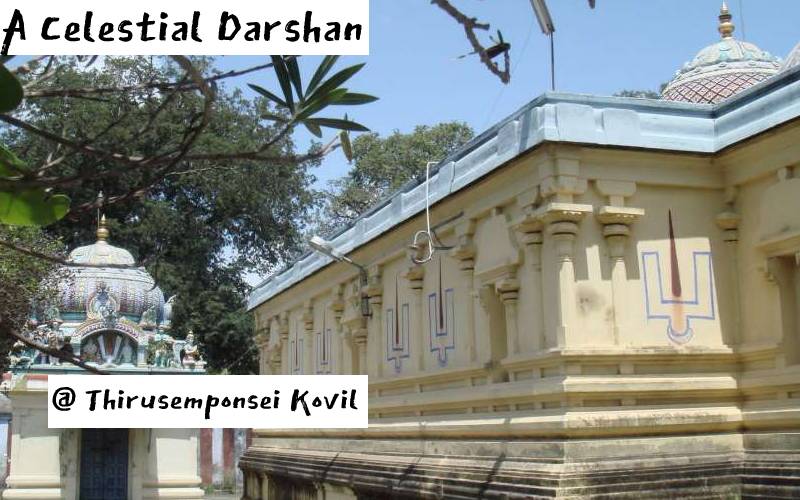
The lord had offered his darshan to Rudra, Anantha, and Sage Dhrudanetra. This place is known as Hemarangapuri and the sacred waters are known as Hemapushkarani, Kanakatheertham and Nithyapushkarani. This temple follows the pancharaathra aagamam and the Vimanam (tower) is known by the names Veda Vimanam, Kanaka Vimanam, and Kanakavalli Vimanam. The processional deity is also known as Sempon Arangar (Ranganathar).
Kashyapa of Kanchipuram happened to be a poor Brahmin and his numerous efforts could not yield him a sustainable life. One day a bhaagavata advised Kashyapa thus, “O Kashyapa! Proceed to Thirunangoor and offer the thirumandiram to Lord Hemarangan. He will pull you out of misery.” The devout Kashyapa proceeded to Thirunangoor at that very moment. He reached a sacred spot and took a bath in the waters of the Hemapushkarani. He prostrated in front of Lord Sempon Arangar who was present with Allimaamalar Naachiyaar and Bhoomi Devi under the Kanaka Vimanam. The devout Kashyapa recited the thirumandiram 32,000 times over a period of three days. Lord Per Arulalan blessed Kashyapa with a huge fortune. Some people state that this incident was the reason for the lord to acquire the name, Sempon Arangar. Thereafter, the ones who wished to repay their debts, to reclaim lost wealth, or to acquire wealth began visiting Hemarangapuri (Thiru Sempon Sei Kovil).
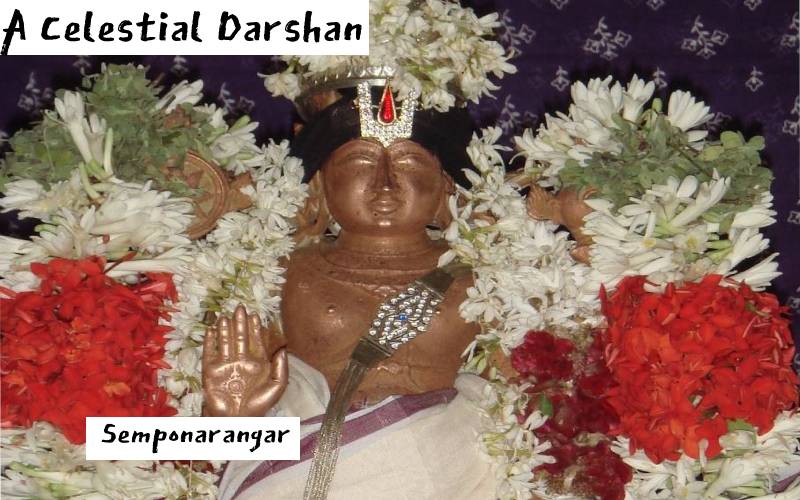
Lord Narayana as Per Arulalan will not only bless the devotee with gold, he will also bless them with morals, ethics, and a philanthropic mind.
Industrialist D. Balasundaram of Coimbatore Capital is a regular visitor to Thirunaangoor and he is ever keen to take as many devotees as possible along with him. G. Sowndararajan of CRI Pumps, Coimbatore is well-known for his philanthropic activity and is a regular visitor to this temple.
The divya desam-s of Tamil Nadu are the repositories of both the classical languages, Sanskrit and Tamil. Every attribute and name can be seen in both these languages. The symbiotic coexistence of Tamil and Sanskrit exhibits the linguistic symphony of the Dravidian country since time immemorial.
Tamil and Sanskrit form the two lips of Indian culture and they act in perfect consonants with the purpose of sharing the best to the world. The vernacular lip and the national lip are quite important for they help to articulate the voice of the nation.
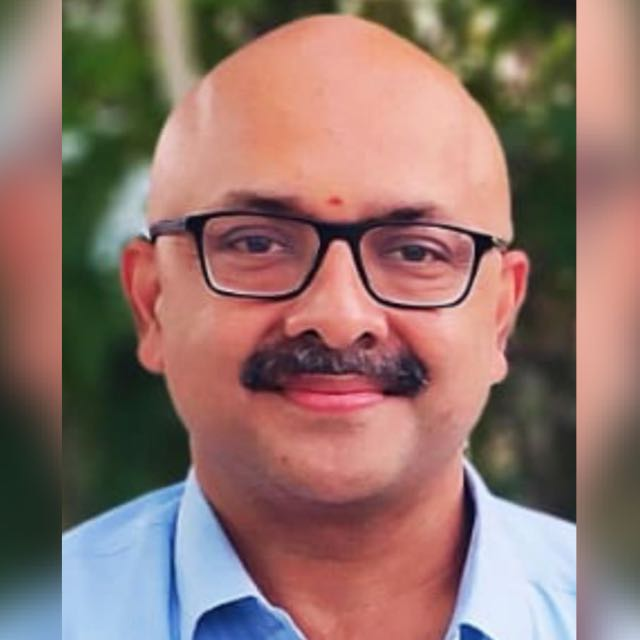 Mr. Rajesh Govindarajulu is one of the founding members of the Verandah Club Pvt. Ltd. He is a leading columnist, historian, jeweler, entrepreneur, and a heritage enthusiast who is earnestly working to revive the past in the light of the present. Experiential learning about the history of Coimbatore is his main course of interest and he is also a panel member of many colleges in the city.
Mr. Rajesh Govindarajulu is one of the founding members of the Verandah Club Pvt. Ltd. He is a leading columnist, historian, jeweler, entrepreneur, and a heritage enthusiast who is earnestly working to revive the past in the light of the present. Experiential learning about the history of Coimbatore is his main course of interest and he is also a panel member of many colleges in the city.
NEXT ARTICLE
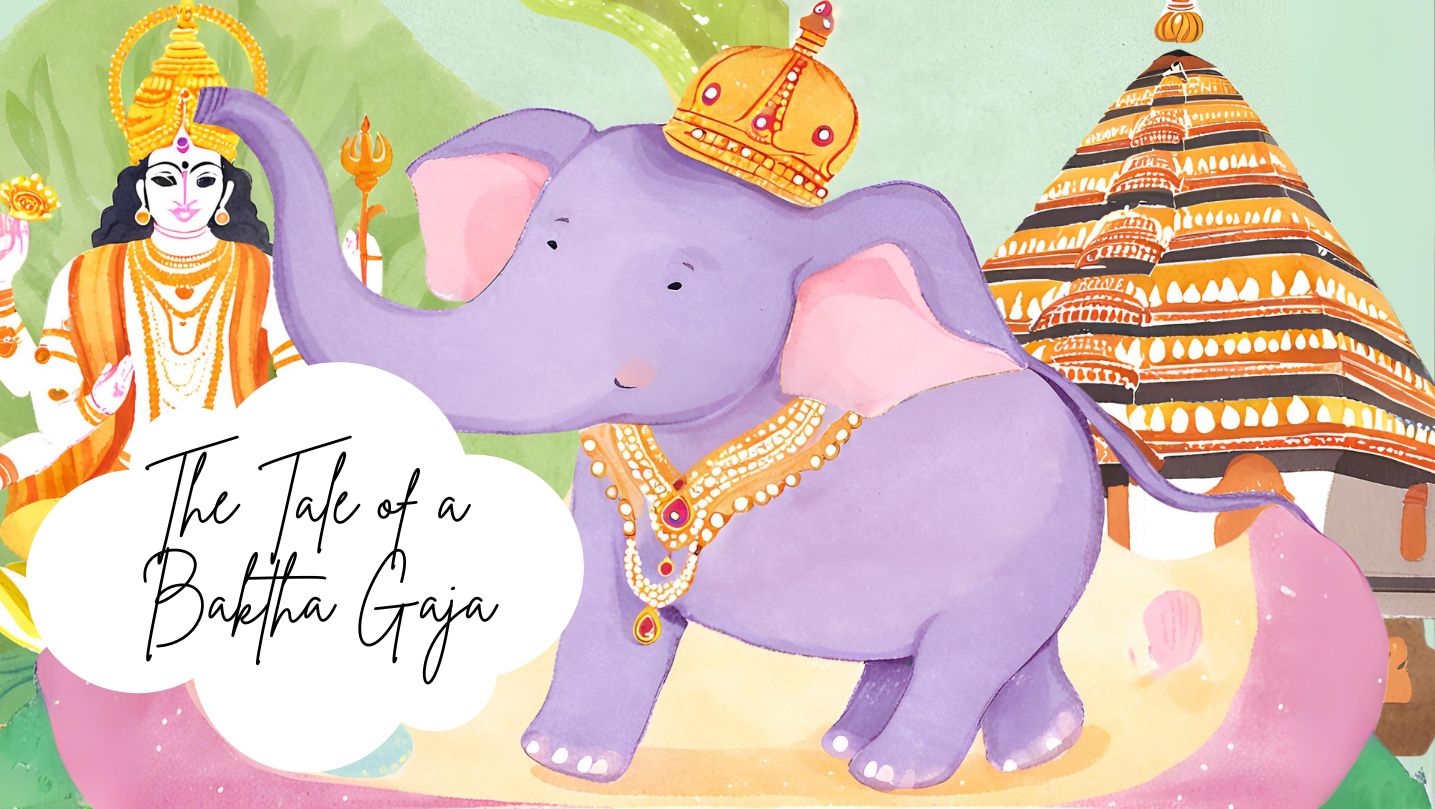
In the lush, green heart of Kerala lived an elephant who became a living legend - a tale of an elephant turned into a bakth. His name was Keshavan, bu...
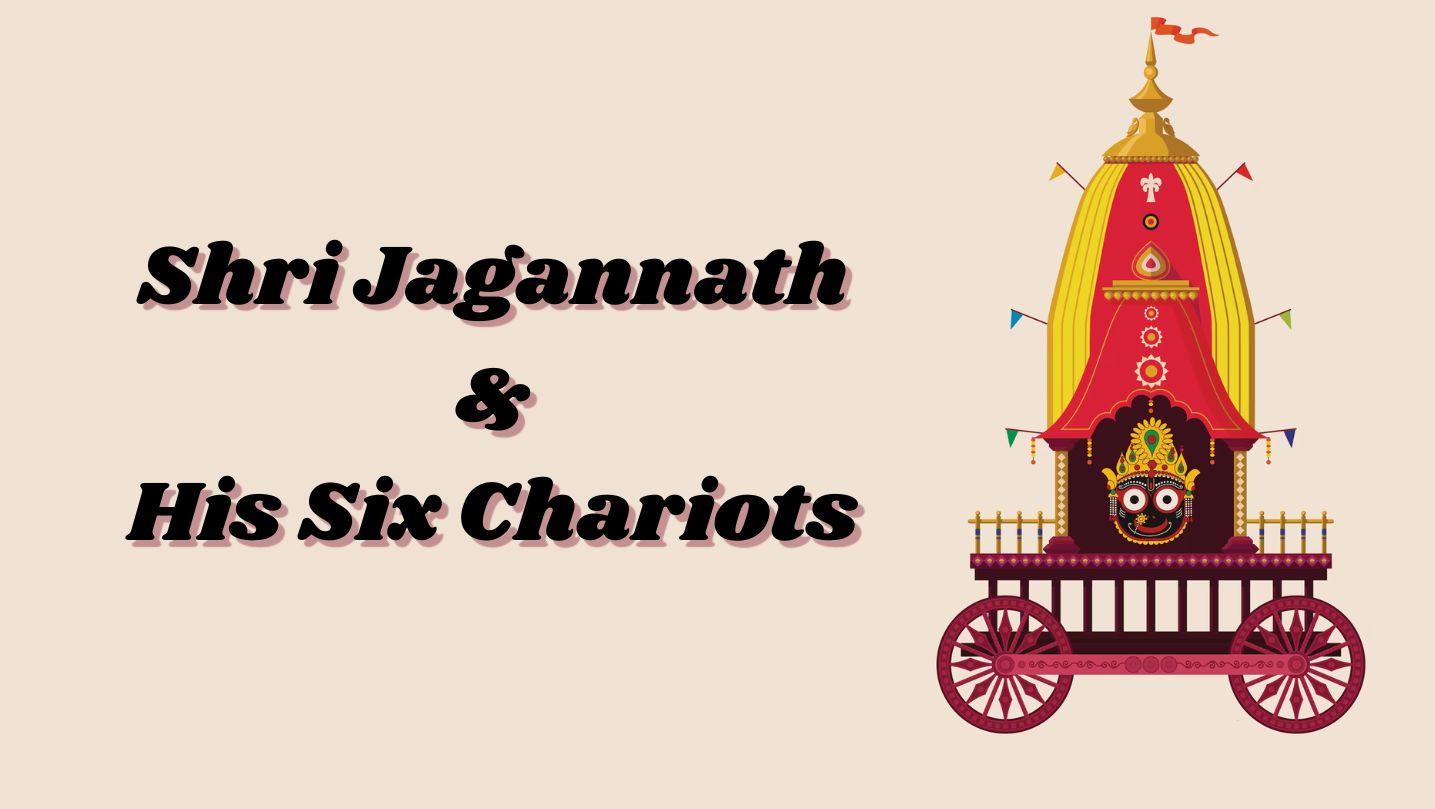
The Chaitanya Charitamrita by Shri Krishna Das Kaviraj provides a vivid description of the operations management of Shri Gundicha Yatra during the tim...
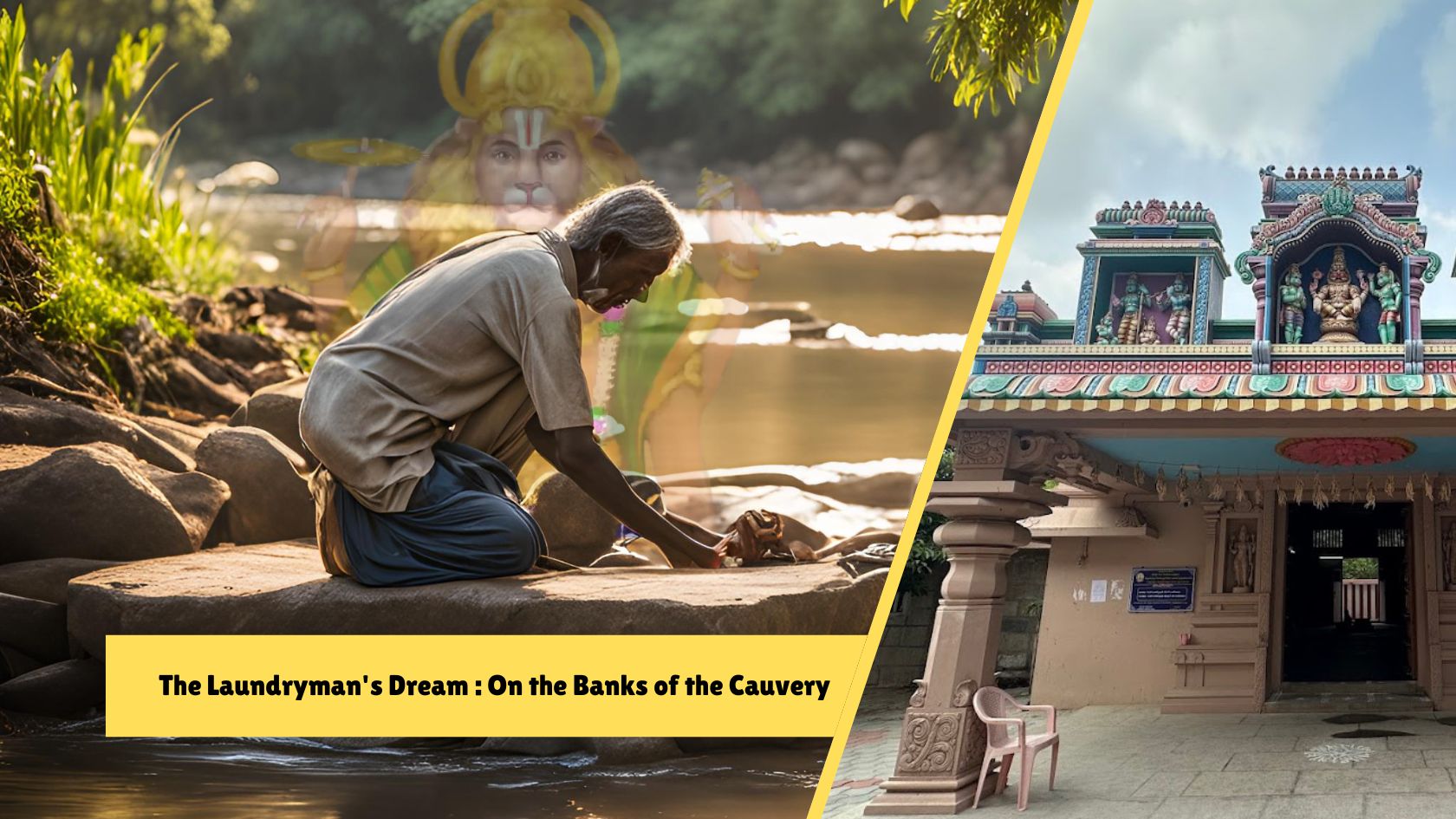
The sun beat down on my back as we stepped out of the car, the air thick with the humidity of rural Tamil Nadu. Chinthalavadi, a small village nestled...